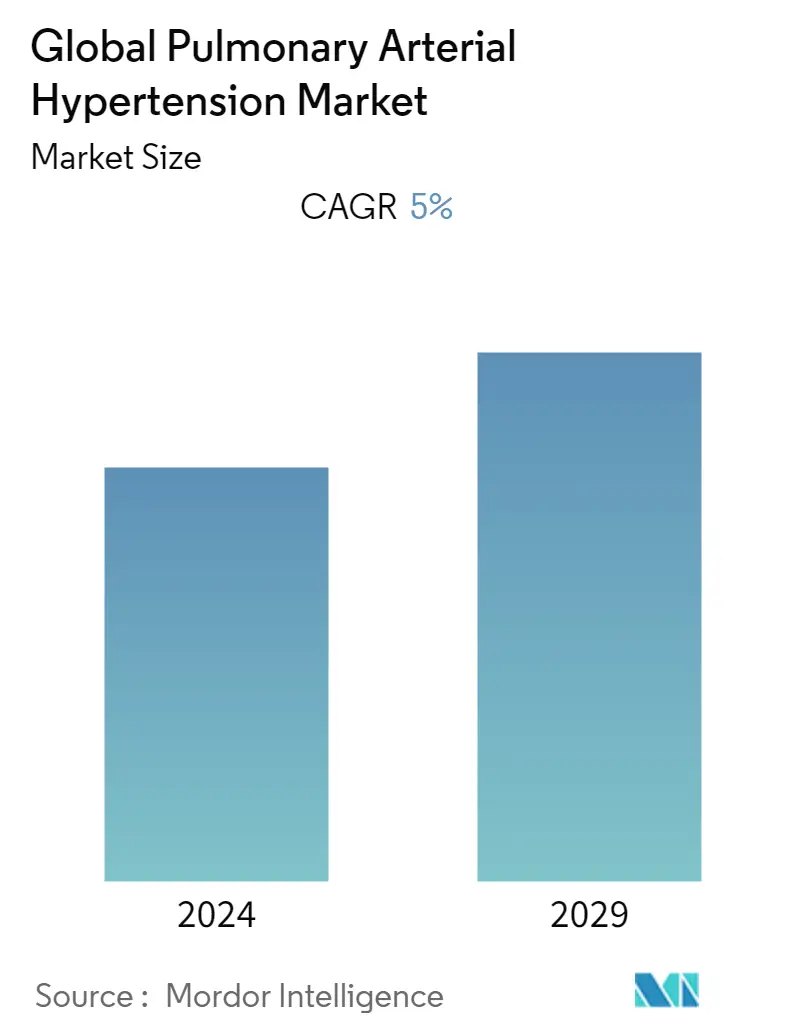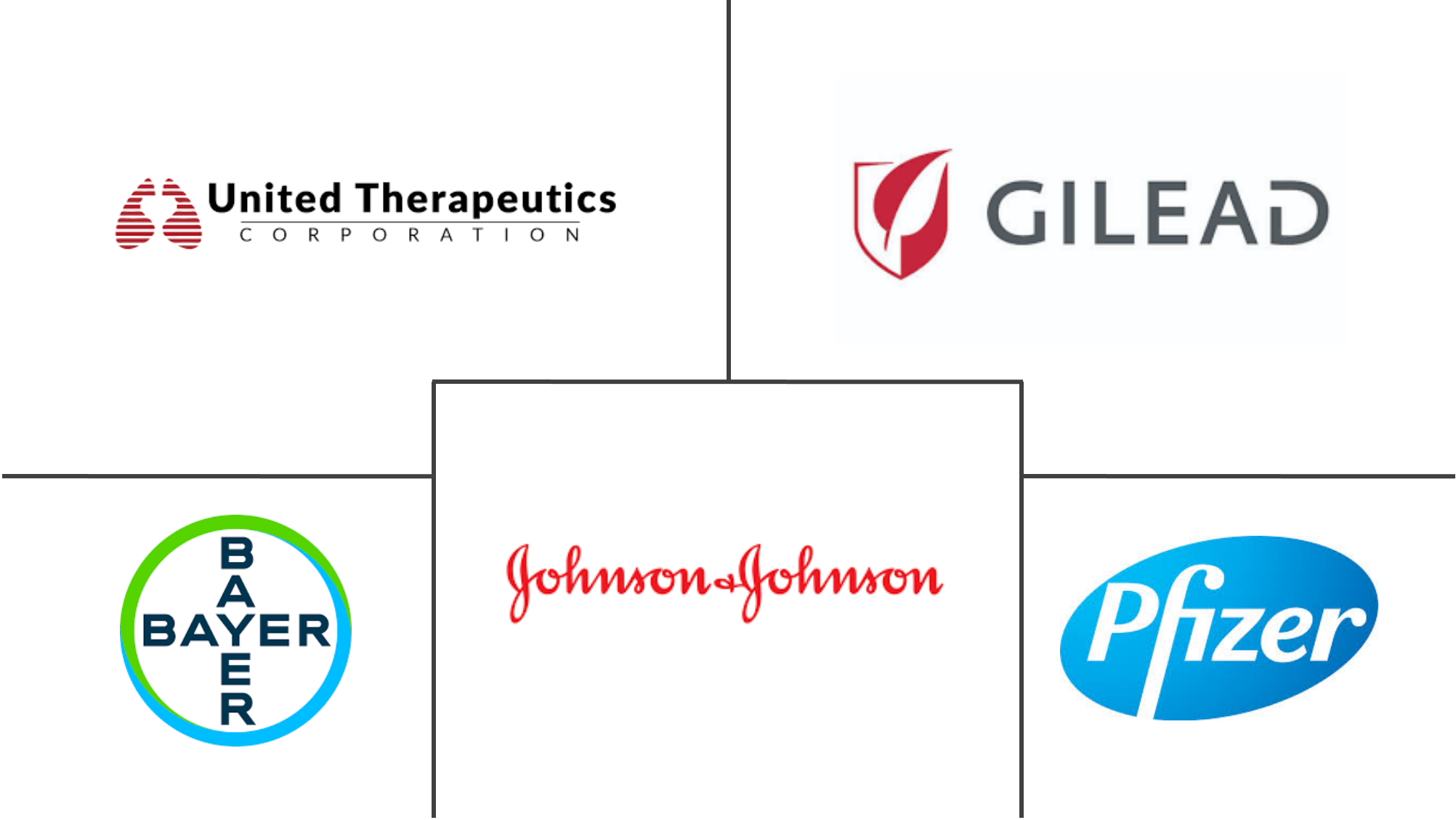Market Size of Global Pulmonary Arterial Hypertension Industry

| Study Period | 2019 - 2029 |
| Base Year For Estimation | 2023 |
| Forecast Data Period | 2024 - 2029 |
| CAGR | 5.00 % |
| Fastest Growing Market | Asia Pacific |
| Largest Market | North America |
Major Players
*Disclaimer: Major Players sorted in no particular order |
Need a report that reflects how COVID-19 has impacted this market and its growth?
Pulmonary Arterial Hypertension (PAH) Market Analysis
The Pulmonary Arterial Hypertension Market is projected to register a CAGR of 5.0% during the forecast period (2022-2027).
Coronavirus disease 2019 (COVID-19) is a primary respiratory infectious disease, which can result in pulmonary and cardiovascular complications. As per an article titled 'Pulmonary Hypertension and COVID-19' published in August 2022, echocardiographic signs of PH in approximately 12 to 13% of hospitalized patients with COVID-19. Those with chronic pulmonary obstructive disease, congestive heart failure, pulmonary embolism, and prior PH are at increased risk to develop or worsen pulmonary hypertension (PH). Evidence of PH seems to be associated with increased disease severity and poor outcome. Because of the importance of pulmonary hemodynamics in the pathophysiology of COVID-19, there is growing interest in exploring the potential therapeutical benefits of inhaled vasodilators in patients with COVID-19. As per an article titled 'Potential long-term effects of SARS-CoV-2 infection on the pulmonary vasculature: a global perspective' published in December 2021, the dynamic behavior of the SARS-CoV-2 virus and the potential causes of heterogeneity in COVID-19 are essential for anticipating and treating the disease, in both the acute and the chronic stages, including the development of chronic pulmonary hypertension. Both COVID-19 and chronic pulmonary hypertension have assumed global dimensions, with potentially complex interactions. Therefore, pulmonary hypertension is said to have a significant impact on the market during the pandemic.
Pulmonary arterial hypertension is a group of rare and life-threatening diseases that leads to increased pulmonary arterial pressure and localized hypertension, which can result in heart failure. As per an article titled 'Prevalence, incidence, and survival of pulmonary arterial hypertension: A systematic review for the global burden of disease 2020 study' published in January 2022, pulmonary arterial hypertension (PAH) is characterized by increased resistance in the pulmonary arterioles because of remodeled blood vessels. The prevalence ranged from 0.4 to 1.4 per 100,000 persons. According to World Health Organization (WHO) key facts published in August 2021, an estimated 1.28 billion adults aged 30-79 years worldwide have hypertension, most (two-thirds) living in low- and middle-income countries. One of the global targets for non-communicable diseases is to reduce the prevalence of hypertension by 33% between 2010 and 2030. The increasing prevalence of pulmonary arterial hypertension, government support for the development of orphan drugs, and the growing geriatric population are the main factors that are boosting the growth of the pulmonary arterial hypertension market.
According to the World Health Organization (WHO), between 2015 and 2050, the proportion of the world's population over 60 years will nearly double from 12% to 22%. The symptoms of Pulmonary arterial hypertension include shortness of breath (dyspnea), especially during exercise, chest pain, and fainting. The increase in the number of geriatrics leads to consequences which in several cases include complications related to pulmonary arterial hypertension. The technological advancements are also steadily focusing upon the identification of new molecular pathways which contributes to the development of better treatments possible over the forecast period. All these factors boost the growth of the market.
However, patent expiration of drug molecule and side effects associated with the drugs is expected to impede the growth of the global market in the forecast period.
